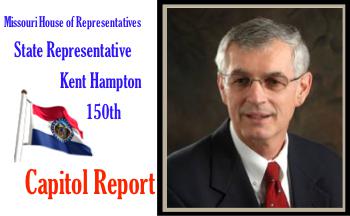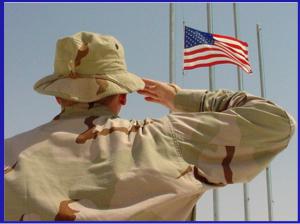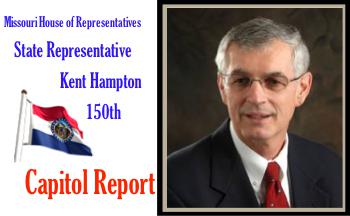
Submitted by
Dee Loflin, SMT Manager/Writer
On this day in 1939, the first televised Major League baseball game is broadcast on station W2XBS, the station that was to become WNBC-TV. Announcer Red Barber called the game between the Cincinnati Reds and the Brooklyn Dodgers at Ebbets Field in Brooklyn, New York.
At the time, television was still in its infancy. Regular programming did not yet exist, and very few people owned television sets--there were only about 400 in the New York area. Not until 1946 did regular network broadcasting catch on in the United States, and only in the mid-1950s did television sets become more common in the American household.
In 1939, the World's Fair--which was being held in New York--became the catalyst for the historic broadcast. The television was one of fair’s prize exhibits, and organizers believed that the Dodgers-Reds doubleheader on August 26 was the perfect event to showcase America's grasp on the new technology.
By today's standards, the video coverage was somewhat crude. There were only two stationary camera angles: The first was placed down the third base line to pick up infield throws to first, and the second was placed high above home plate to get an extensive view of the field. It was also difficult to capture fast-moving plays: Swinging bats looked like paper fans, and the ball was all but invisible during pitches and hits.
Nevertheless, the experiment was a success, driving interest in the development of television technology, particularly for sporting events. Though baseball owners were initially concerned that televising baseball would sap actual attendance, they soon warmed to the idea, and the possibilities for revenue generation that came with increased exposure of the game, including the sale of rights to air certain teams or games and television advertising.
Today, televised sports is a multi-billion dollar industry, with technology that gives viewers an astounding amount of visual and audio detail. Cameras are now so precise that they can capture the way a ball changes shape when struck by a bat, and athletes are wired to pick up field-level and sideline conversation.
A brief legislative update: Veto session begins September 11th in which the legislative body, if it so choses and has the required votes to override the Governor’s veto of legislation passed this past session.
See ya in Church Sunday!
As always, it is an honor to serve you in the Missouri House. If you would like to discuss any issue, please call 573-751-3629. You can also email me at kent.hampton@house.mo.gov . I look forward to hearing from you.

Submitted by
Dee Loflin, SMT Manager/Writer
In the coming weeks Missouri families will be working to clean up their homes, businesses, farms and communities. As we move forward my staff and I will be working to ensure you have the resources you need. Here are a few tips from the U.S. Army to keep in mind should the need arise as we begin the process of getting life back to normal:
• Listen to news reports to make sure water supplies are not contaminated.
• Stay clear of flood waters, standing and moving, as they may be contaminated or deeper than expected.
• Beware of downed power lines.
• Avoid any roads where flood waters have receded as they may have weakened and could collapse under the weight of a car.
• Be extremely cautious when entering buildings and homes, as there may be unseen damage.
• Clean and disinfect everything that was touched by flood water, as it can contain sewage and other contaminants.
The rain and waters will soon be gone. My staff and I are working to make sure attention for a region does not recede with the flood waters.
I will be working to ensure operations between local, state and federal officials continue until life returns to normal for those impacted by flooding. Often times rural America is forgotten.
I will be holding federal emergency management officials’ feet to the fire so that rural Missouri gets the help we need.
Finally, I ask that you keep our fellow Missourians in your thoughts and prayers. So many have lost so much. In the coming days our families, neighbors and friends will be working to get life back to normal.
If you or your family needs help cleaning up after the flood please contact my offices in Rolla at 573-364-2455, West Plains at 417-255-1515, Farmington at 573-756-9755 or Cape Girardeau at 573-335-0101.
My staff and I are here to help in times of natural disaster.

Submitted by
Dee Loflin, SMT Manager/Writer
8th Congressional District, Missouri - Tuesday, August 6, 2013, Congressman Jason Smith (MO-08) announced the formation of the Veterans Advisory Council to advise on issues important to veterans. Smith and his staff will work with members of the Veterans Advisory Council to get feedback on issues with the Veterans Administration and as new policy is being crafted that will impact veterans living in Missouri’s 8th District.
"Honoring our veteran’s service is a top priority for me. I formed this Veteran’s Advisory Council to be a resource for issues that are affecting veterans and their families in our Eighth Congressional District,” said Smith. “Through meetings, calls and visits my staff and I will work with members of the Veterans Advisory Council on issues with the Veterans Administration and access to healthcare services. The Council will also serve as a key resource for policy ideas and a sounding board for legislation being considered in Congress.”
Smith’s Veterans Advisory Council has representatives from across Missouri’s Eighth Congressional District. Mr. Charles Kruse and Mr. Jim Bland of Dexter, Missouri will be serving on the committee for Stoddard County.

Submitted by
Dee Loflin, SMT Manager/Writer
Jefferson City, Missouri - Gov. Jay Nixon today ordered the deployment of 50 military policemen of the Missouri National Guard to assist local civil authorities in protecting lives and property threatened by flash floods in areas of southern Missouri impacted by flooding from recent heavy rain.
“The Citizen-Soldiers of the Missouri National Guard are one of our most valuable assets in helping Missourians during and after natural disasters, and their skill and training will greatly assist state and local emergency responders in taking necessary action to save lives,” Gov. Nixon said.
This morning, Gov. Nixon spoke to elected officials in Laclede, Miller, Phelps and Pulaski counties about the situation in each of those counties, and about the ongoing assistance from the state.
Yesterday, the Governor declared a state of emergency after heavy rains caused flash flooding and at least one confirmed death in the Waynesville area. That executive order activated the Missouri State Emergency Operations Plan, which allows state agencies to coordinate directly with local jurisdictions to provide emergency services.
In addition to the deployment of the Missouri National Guard, the Missouri State Highway Patrol has deployed additional marine operations troopers, a rescue helicopter and associated assets to the region to assist local emergency responders. At the Governor’s direction, those resources will remain in place until the threat has passed. The State Emergency Management Agency is actively monitoring conditions and will continue to work with local response agencies to provide additional support as needed.
The Governor urged residents of flood-affected areas of southern Missouri to pay close attention to weather warnings and follow the safety instructions of local officials as the potential for additional dangerous flooding continues. Missourians, especially motorists, are encouraged to remember these important safety tips on flooding and high water:
• Do not walk through moving water. Six inches of moving water can make you fall. If you have to walk in water, walk where the water is not moving. Use a stick to check the firmness of the ground in front of you.
• Do not drive into flooded areas. If floodwaters rise around your car, abandon the car and move to higher ground if you can do so safely. You and the vehicle can be quickly swept away. Six inches of water will reach the bottom of most passenger cars, causing loss of control and possible stalling.
A foot of water will float many vehicles. Two feet of rushing water can carry away most vehicles, including sport utility vehicles and pick-ups. Even if the water appears shallow enough to cross, don’t try it. Water hides dips in the road. Worse yet, there may be no road at all under the water. Flooding can scour away the entire road surface and a significant amount of ground beneath.

Submitted by
Dee Loflin, SMT Manager/Writer
The Smithsonian Institution Act
by President James K. Polk
After a decade of debate about how best to spend a bequest left to America from an obscure English scientist, President James K. Polk signs the Smithsonian Institution Act into law.
In 1829, James Smithson died in Italy, leaving behind a will with a peculiar footnote. In the event that his only nephew died without any heirs, Smithson decreed that the whole of his estate would go to "the United States of America, to found at Washington, under the name of the Smithsonian Institution, an Establishment for the increase and diffusion of knowledge." Smithson's curious bequest to a country that he had never visited aroused significant attention on both sides of the Atlantic.
Smithson had been a fellow of the venerable Royal Society of London from the age of 22, publishing numerous scientific papers on mineral composition, geology, and chemistry. In 1802, he overturned popular scientific opinion by proving that zinc carbonates were true carbonate minerals, and one type of zinc carbonate was later named smithsonite in his honor.
Six years after his death, his nephew, Henry James Hungerford, indeed died without children, and on July 1, 1836, the U.S. Congress authorized acceptance of Smithson's gift. President Andrew Jackson sent diplomat Richard Rush to England to negotiate for transfer of the funds, and two years later Rush set sail for home with 11 boxes containing a total of 104,960 gold sovereigns, 8 shillings, and 7 pence, as well as Smithson's mineral collection, library, scientific notes, and personal effects. After the gold was melted down, it amounted to a fortune worth well over $500,000. After considering a series of recommendations, including the creation of a national university, a public library, or an astronomical observatory, Congress agreed that the bequest would support the creation of a museum, a library, and a program of research, publication, and collection in the sciences, arts, and history. On August 10, 1846, the act establishing the Smithsonian Institution was signed into law by President James K. Polk.
Today, the Smithsonian is composed of 19 museums and galleries including the recently announced National Museum of African American History and Culture, nine research facilities throughout the United States and the world, and the national zoo. Besides the original Smithsonian Institution Building, popularly known as the "Castle," visitors to Washington, D.C., tour the National Museum of Natural History, which houses the natural science collections, the National Zoological Park, and the National Portrait Gallery. The National Museum of American History houses the original Star-Spangled Banner and other artifacts of U.S. history. The National Air and Space Museum has the distinction of being the most visited museum in the world, exhibiting such marvels of aviation and space history as the Wright brothers' plane and Freedom 7, the space capsule that took the first American into space. John Smithson, the Smithsonian Institution's great benefactor, is interred in a tomb in the Smithsonian Building.
As always, it is an honor to serve you in the Missouri House. If you would like to discuss any issue, please call 573-751-3629. You can also email me at kent.hampton@house.mo.gov . I look forward to hearing from you.

